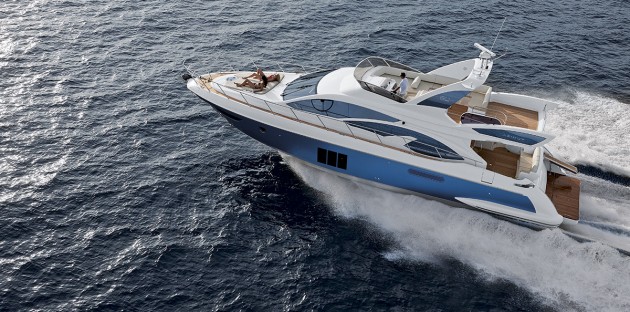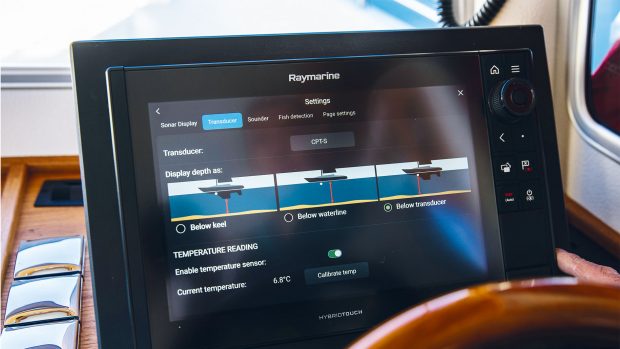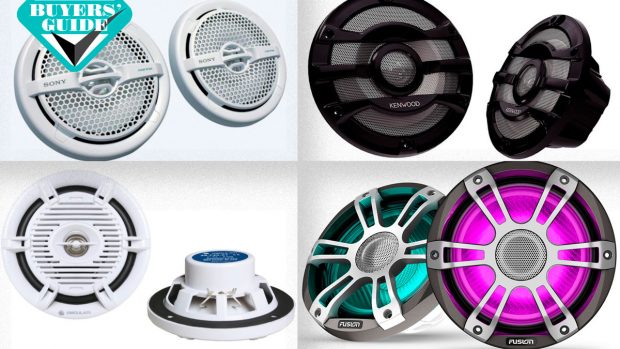Our technical expert Dave Marsh explains how induced drag can affect the fuel efficiency of your boat
Planing wins the race
Beyond 28 to 30 knots our planing boat gains the upper hand. Although it still experiences both forms of frictional drag, my test data suggests that it will typically become more fuel efficient than its semi-displacement counterparts beyond speed–length ratios of 2.5 to 3.0 – around 18 to 21 knots on a boat like the Azimut 60 (pictured below) with its 49ft waterline.
 That’s principally because at these speeds it is also starting to plane properly, so wave-making resistance begins to fall as a percentage of the total drag.
That’s principally because at these speeds it is also starting to plane properly, so wave-making resistance begins to fall as a percentage of the total drag.
However, an unwelcome by-product of the bow-up trim that allows the planing boat to skip over the surface is induced drag.
Dynamic lift acts at right angles to the surface of the hull, and that force, along with the underside of the hull, is now canted slightly backwards.
So although most of it tries to lift the boat out of the water, a small part of that energy points backwards in the form of drag.
This is the reason why designers obsess over the running trim of their planing boats; more trim means more lift, but also more induced drag, so getting the balance right is important.
Spray making drag is most evident on planing boats; it comprises the lost energy needed to ‘carry’ the spray forward before it’s finally shed.
Stepping up to the plate
There is one particular myth about drag that’s worth debunking. Time and again, stepped hulled boats are touted as more efficient because, so the story goes, the air that percolates under the hull decreases frictional drag.
Although that element is present, the main reason for their efficiency is that a stepped hull boasts a better lift-drag ratio.
Splitting a single lifting surface into two or three smaller planing surfaces (using the steps) means that the aspect ratio of each surface is significantly higher than the equivalent single surface.
And just like an aircraft wing, a high aspect surface, such as a glider’s wing, is more efficient than a low aspect lifting surface such as a fighter jet wing.
Although planing boats don’t have the natural barriers that displacement and semi-displacement boats present, their speed is not without consequence.
On the whole, the power they need is proportional to the square of the speed. So if you want to travel at 40 knots instead of 30, expect your fuel consumption to rocket by 78%! (i.e.[40/30]2).
Whatever you drive, the only sure way to truly reduce your drag, and your fuel consumption, is to slow down.

Keeping things on the level with Humphree stabilisers
Humphree takes the zero-speed fins story a stage further with its new integrated trim and stabiliser system, writes Dave Marsh

RotorSwing boat stabilisers tested on Linssen sea trial
Can this pair of spinning cylinders from RotorSwing really stop a Linssen Grand Sturdy 52.9 from rolling? Dave Marsh travels









